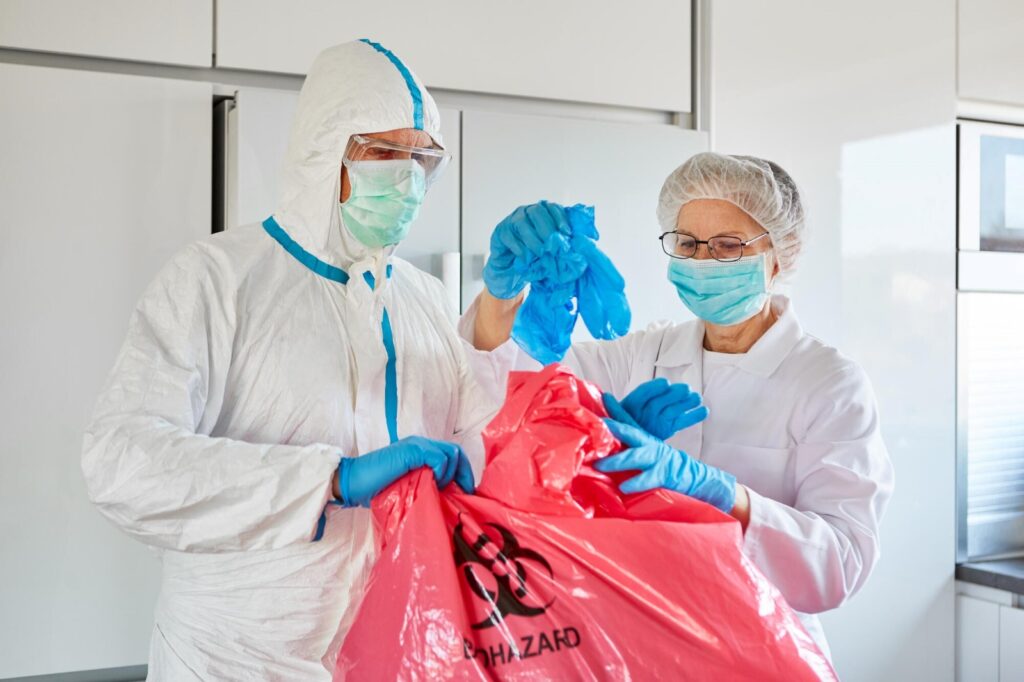Navigating the world of biohazard safety procedures can be overwhelming, but it doesn’t have to be. A key tool in maintaining a safe environment is the bloodborne pathogens kit.
This comprehensive guide will walk you through the essential steps of correctly using and disposing of a bloodborne pathogens kit. We believe in empowering our readers with knowledge to tackle these important tasks with confidence. Read on to become a pro in handling pathogens kits.
Proper Usage of Bloodborne Pathogens Kit
The proper usage of a bloodborne pathogens kit usage begins with wearing personal protective equipment, such as gloves and eye protection. Next, use the absorbent materials provided in the kit to soak up the spill, followed by a disinfectant to clean the area. Always remember to dispose of everything safely in designated biohazardous waste containers.
How to Dispose of Blood and Blood Products Safely
Disposing of blood and blood products safely is a critical step in properly handling a bloodborne pathogens kit. Here are essential guidelines to ensure environmental safety and prevent disease transmission.
Preparing for Cleanup
Before initiating the cleanup, assess the situation to understand the extent and nature of the spill. Equip yourself with the necessary protective gear from the kit, including gloves, face mask, and eye protection if necessary. Familiarize yourself with all the components of the kit to ensure a safe and effective cleanup.
Initial Cleanup
Start the initial cleanup by carefully soaking up the spill using the absorbent materials from the kit. Be mindful to avoid direct contact with the spill. Once absorbed, use the disinfectant wipes to sanitize the area thoroughly.
Deep Cleaning
Make sure that all traces of the spill are gone during the deep cleaning. Use the special cleaning solution that comes with the kit and carefully follow the directions to make sure the area is completely clean. This important step must be taken to avoid getting sick from bloodborne pathogens.
Disposal
Once the cleanup is done, tightly close the biohazard bag that holds the used materials. Use care when handling the bag and put it in a biohazard trash can. This makes sure the trash is thrown away safely and stops the spread of bloodborne pathogens.
Post-cleanup
After cleaning up, make sure you wash your hands and any skin that got dirty during the process. When you take off and throw away your safety gear, be careful not to touch the outside of it. You should report the incident to the right person in your company, following the rules your company has set up for dealing with bloodborne pathogens.
Waste Management
Managing medical waste is an important part of getting rid of bloodborne pathogen kits. It involves finding the right biohazard trash cans, making sure they’re sealed properly, and following the rules for getting rid of trash in your area. This process is very important for keeping the workplace and the community as a whole safe and healthy.
Certification for Bloodborne Pathogens Training
One great way to make sure you are ready for these kinds of situations is to get certified in bloodborne pathogen training. To learn more about this, go to websites like https://cprcertificationnow.com/collections/cpr-and-first-aid-certifications and look at the CPR and First Aid Certifications.
Master the Proper Handling of Bloodborne Pathogens Kit
Understanding how to properly use and dispose of a bloodborne pathogens kit is critical to personal safety and the prevention of the spread of infectious materials. Remember, your actions can make a significant difference in protecting your health and that of those around you.
Did you like this guide? Great! Please browse our website for more!







